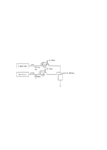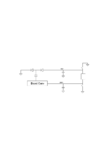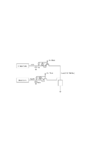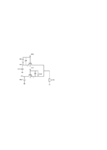BKI
Member level 1

- Joined
- Jul 23, 2014
- Messages
- 33
- Helped
- 0
- Reputation
- 0
- Reaction score
- 0
- Trophy points
- 6
- Activity points
- 264
Hi,
i have a problem with analog switches for high voltage applications.
My circuit is fully integrated.
I have a boost converter that generates 200V and a charge pump that generates -60V. I want two seperate those rails from the load through analog switches.
To limit Vgs to +/-5,5V maximum, i have used Zener diodes and control currents (I1,I2).
Through the control current i want to decide wheter -60V or +200V show up at the load output.
The problem is, the analog switches are not working properly and i don´t understand why.
Here is what it does:
If I2=0A and I1=0A output voltage is going down to -60V
If I2=0A and I1=160uA output voltage is further going down to negative voltage
(It seems, the switch controlled by I1 is always on?)
If I2=100uA and I1=0A the output voltage is going up to 0V
If I2=100uA and I1=160uA the output voltage stays at 0V
Any idea how to solve this problem?
It seems that the switch fed by I2 is switching between on and off, but the switch fed by I1 is always on.
I urgently need your help!!!
i have a problem with analog switches for high voltage applications.
My circuit is fully integrated.
I have a boost converter that generates 200V and a charge pump that generates -60V. I want two seperate those rails from the load through analog switches.
To limit Vgs to +/-5,5V maximum, i have used Zener diodes and control currents (I1,I2).
Through the control current i want to decide wheter -60V or +200V show up at the load output.
The problem is, the analog switches are not working properly and i don´t understand why.
Here is what it does:
If I2=0A and I1=0A output voltage is going down to -60V
If I2=0A and I1=160uA output voltage is further going down to negative voltage
(It seems, the switch controlled by I1 is always on?)
If I2=100uA and I1=0A the output voltage is going up to 0V
If I2=100uA and I1=160uA the output voltage stays at 0V
Any idea how to solve this problem?
It seems that the switch fed by I2 is switching between on and off, but the switch fed by I1 is always on.
I urgently need your help!!!





